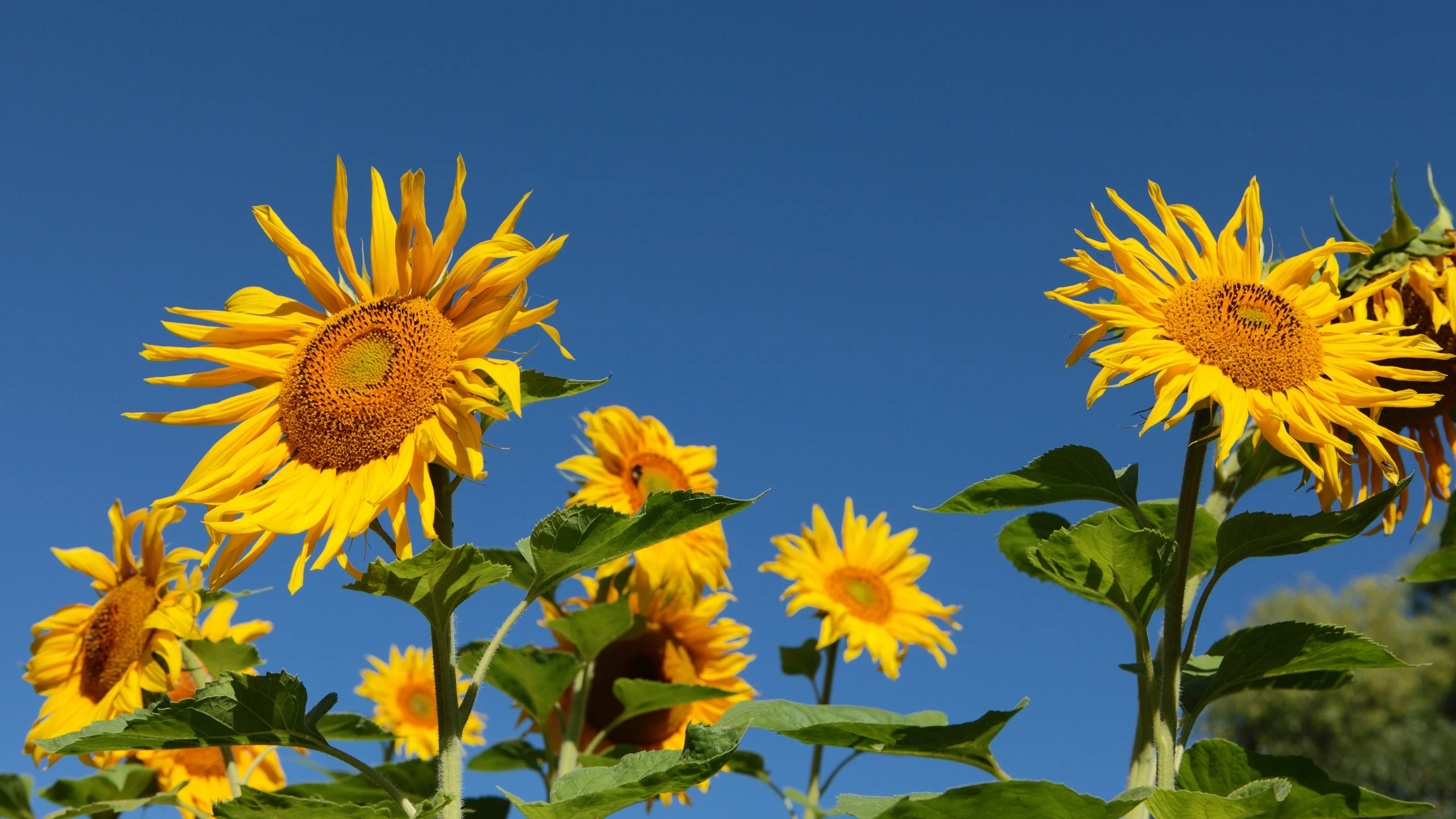
"Surajmukhi (Helianthus annuus — short scientific form: H. annuus) is an annual, broad–leafed, erect flowering plant of the Asteraceae family. It is grown worldwide for its large capitulum (flower head), edible seeds (sunflower seeds), and seed oil (sunflower oil). The seeds and oil are significant sources of dietary unsaturated fatty acids (notably linoleic and/or oleic acids), vitamin E (tocopherols), and other nutraceuticals. Sunflower parts (seeds, oil, petals, receptacle, leaves) have traditional uses in food, skin care (emollients), and folk medicine.
"
Surajmukhi Scientific Name
- Kingdom: Plantae
- Clade (Phylum): Angiosperms
- Clade (Class): Eudicots
- Order: Asterales
- Family: Asteraceae
- Genus: Helianthus
- Species: Helianthus annuus L.
- Short scientific form: H. annuus
Sunflower Common Name
- English: Sunflower, Common sunflower
- Sanskrit (descriptive): Sūryamukhī (सूर्यमुखी) — literally “sun-faced”
- Hindi: सूरजमुखी / सूर्यमुखी (Surajmukhi / Suryamukhi)
- Marathi: Surajmukhi
- Bengali: Surjomukhi / Girasol (regional variants)
- Spanish: Girasol
- French: Tournesol
Traditional and Medicinal Uses
- Respiratory conditions - Decoctions/infusions of seeds or aerial parts have been used traditionally for coughs, bronchial complaints, colds and related respiratory infections.
- Wound care / Topical applications - Sunflower seed oil and poultices made from leaves or crushed seeds have been used as emollients to soothe skin, promote wound healing, and treat minor burns or abrasions.
- Fever & diaphoretic uses - Leaf infusions or liniments were used in some traditions to encourage sweating and help reduce fevers.
- Nutritional / tonic uses - Sunflower seeds are taken as a nutritive and strengthening food; in folk practice they are sometimes recommended to support cardiovascular and general health because of their fatty-acid and vitamin content.
- Anti-inflammatory / analgesic folk use - Aerial part decoctions and seed extracts have been used for symptomatic relief of inflammation and pain.
- Topical dermatological uses - Refined sunflower oil is used traditionally and industrially as a gentle emollient base for creams and ointments.
References
Guo, S., Ge, Y., & Na Jom, K. (2017). A review of phytochemistry, metabolite changes, and medicinal uses of the common sunflower seed and sprouts (Helianthus annuus L.). Chemistry Central Journal, 11, 95. DOI: 10.1186/s13065-017-0328-7.
Liu, X.-S., Zhang, C., Wang, Y., et al. (2020). Chemical composition and antimicrobial and antioxidant activities of sunflower receptacle essential oil. Molecules, 25(21).
United States Pharmacopeia — USP-NF. Sunflower Oil (Helianthus annuus) — Monograph and technical information. United States Pharmacopeial Convention (USP). (Sunflower oil monograph and specification documents; e.g., “Sunflower Oil USP-NF” PDF technical summary).
Bashir, T., Ahmad, M., et al. (2021). Chemistry, Pharmacology and Ethnomedicinal Uses of Helianthus annuus (Sunflower): A Review. The Pharma Innovation Journal (review summarizing ethnobotanical and pharmacological data).
USDA NRCS. (2002). Plant Guide — Annual Sunflower (Helianthus annuus L.). U.S. Department of Agriculture, Natural Resources Conservation Service.
Frontiers / Nutrition & related reviews (example resource summarizing essential-oil compounds and nutritional properties): Liu, X. et al., Chemical Compounds, Antioxidant Activities, and Inhibitory Effects of Helianthus annuus Extracts — Frontiers in Nutrition (2021) and related articles summarizing monoterpenes as major volatile compounds in receptacles/flowers.





 My Account
My Account